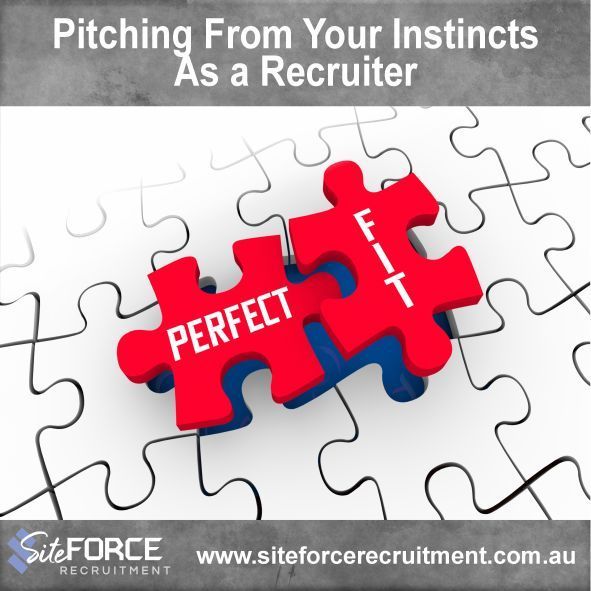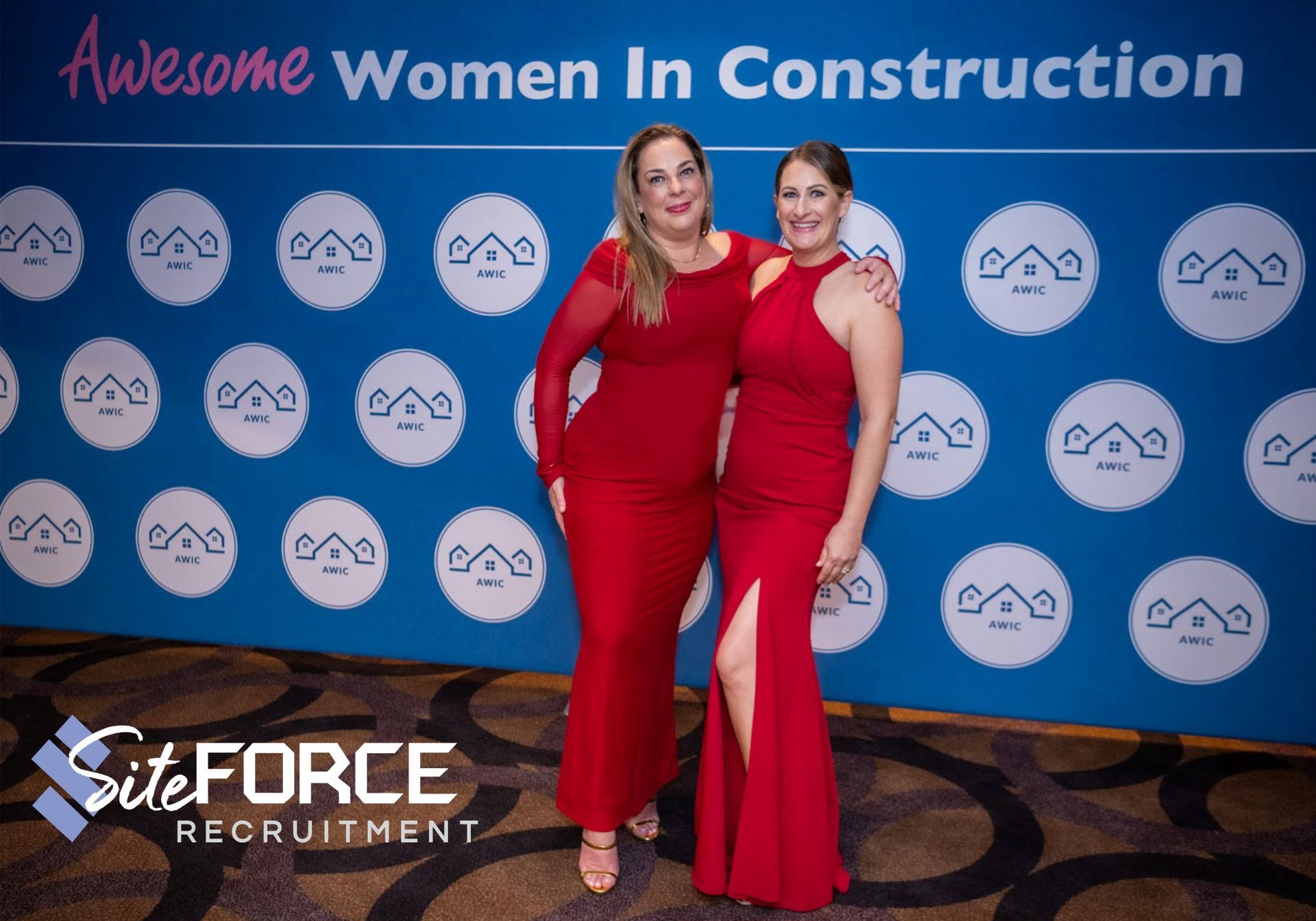PITCHING FROM YOUR INSTINCT AS A RECRUITER
When “Unconventional” Doesn’t Fit the Client’s List but is the Right Match

In the world of recruitment, particularly in construction, matching the right candidate to the right role can be like solving a complex puzzle. As a recruiter, you are armed with a client’s requirements, a list of qualifications, and often a detailed profile of the ideal hire. But what happens when your gut instinct tells you a candidate is perfect for the role, even if they don’t check all the boxes?
For permanent placements or labour hire workers alike, there are moments when you spot qualities in a candidate that may not be listed in the client's job description but will, in your experience, make for a perfect fit. This is where recruitment becomes an art as much as a science, and is part of the ‘secret sauce’ that a great recruiter brings to the table.
So how do you navigate this tricky situation? How do you approach a client and back up your instinct when a candidate deviates from the profile they’ve outlined? Let's dive into how to make your case for the "unconventional" candidate.
Recognising the Right Candidate Beyond the Profile
One of the biggest assets a recruiter brings to the table is the ability to see beyond a client’s checklist and to be able to recognise their ‘unstated needs’. Of course, certain technical skills, qualifications, and experience are non-negotiable, but culture, adaptability, life experience and potential are harder to define than with metrics alone.
In construction, where collaboration, hands-on experience, and problem-solving are critical, you might encounter an unconventional candidate who doesn’t exactly match the technical profile but stands out in these soft-skill areas. As a recruiter, you might recognise traits such as resilience in dealing with challenges, a strong work ethic, or the ability to quickly integrate into a team. These attributes are often essential to success, yet they’re not always captured in a CV or a list of qualifications.
Identifying a Client’s Unstated Needs
As a recruiter, identifying a client’s unstated needs is crucial for finding the right candidates, especially when they diverge from the traditional profile. These needs often go beyond technical skills and formal requirements, delving into cultural fit, team dynamics, or project-specific challenges. To uncover these, you must engage deeply with the client through active listening, observation, and asking the right questions. Research by the Chartered Institute of Personnel and Development (CIPD) highlights the importance of understanding both the explicit and implicit demands of a job. Often, clients may not articulate these softer factors, but by fostering open communication and building a long-term relationship, you can recognise patterns and nuances that aren’t immediately obvious.
For example, you may observe that a client values adaptability and resourcefulness over rigid qualifications when working on fast-paced construction projects. By engaging in ongoing discussions and attending site visits, you can assess the actual work environment and uncover subtle needs, such as a preference for candidates who can manage high-pressure situations or lead effectively without micromanagement. These insights allow you to build your instincts for placing the right person in the right job, that go beyond the brief and be able to successfully recommend candidates who, while not ticking every technical box, have the qualities to thrive in the client’s specific context.
However, to build these instincts, you must be willing to go the extra mile, as we do, in developing these in depth relationships, as well as taking the time to understand the workplace culture, including undertaking site visits. For a client, if your recruiter does not do this, then you need to talk to us.
Building Confidence in Your Instincts
Experience is key when it comes to trusting your gut. You’ve likely placed hundreds of candidates and have seen firsthand how some flourish in environments where, on paper, they may not have seemed like the ideal fit. This history of successful placements sharpens your instincts. When a candidate diverges from the typical profile but feels like the right match, it’s because you’ve seen a similar scenario work before.
Backing up your instincts with real-world examples can go a long way in convincing a client. For instance, highlight past cases where a candidate with a non-traditional background or skill set excelled in a similar role. This evidence, combined with your experience, reassures clients that your recommendation isn’t just a hunch but is based on informed insight.
Backing Up Your Gut Feeling with Data
While your instinct might drive your decision, it’s crucial to back it up with evidence. When presenting a candidate who doesn’t fit the client’s typical profile, you can point to specific strengths or achievements that demonstrate their potential.
- Skills Assessment: Perhaps the candidate has certifications or practical experience not listed in their formal education. In construction, hands-on experience can be just as valuable as a university degree.
- Culture Fit: Studies have shown that culture fit is one of the strongest predictors of long-term success in a role. According to a 2015 study by the Harvard Business Review, employees who align with a company’s culture are more likely to thrive, stay longer, and perform better. You might explain that the candidate has worked in similar high-pressure environments or is familiar with the type of projects your client manages, even if their role was slightly different.
- Adaptability and Learning Agility: Research has shown that learning agility—an individual’s ability to adapt, grow, and learn from experience—is a strong predictor of success in dynamic industries like construction. You can emphasise that while the candidate may not meet every criterion, their history of learning agility makes them a strong long-term investment. A widely recognised academic study on learning agility is the research conducted by the Center for Creative Leadership (CCL), particularly the work of Dr. Warner Burke. A key finding from this research, published in the Industrial and Organizational Psychology Journal, is that learning agility is a strong predictor of success. His study defines learning agility as the ability and willingness to learn from experience, adapt to new situations, and apply that learning to improve performance. Dr. Burke and his colleagues conducted extensive research that identified several dimensions of learning agility, such as:
- Mental Agility – Thinking critically and dealing with complexity.
- People Agility – Understanding and relating to others, and using this knowledge to improve team performance.
- Change Agility – Enjoying experimentation, being comfortable with change, and adapting to new and uncertain environments.
- Results Agility – Delivering results in first-time or challenging situations through resourcefulness.
How To Present the Unconventional Candidate to the Client
When discussing an unconventional candidate with your client, transparency is key. Acknowledge that the candidate doesn’t meet all the standard metrics but shift the focus to their strengths. Begin by outlining why the candidate caught your attention, describing both their technical abilities and the more intangible qualities that make them a good fit. Use concrete examples from their previous work and link those to your client's specific needs.
It’s essential to ensure that the conversation is solution-focused. Rather than apologising for what the candidate lacks, highlight how they’ll fill a specific gap or bring an unexpected advantage to the team. For example, you could say, "I know you're looking for someone with X years of experience in a supervisory role, but this candidate has demonstrated strong leadership in smaller projects and has a fantastic rapport with their team, which is why I believe they’d excel in this position."
How Clients Should View This Situation
For clients, receiving a candidate recommendation that doesn’t match their specified criteria can be disconcerting. It may feel at first that this is wasting your time, as you’ve been clear on what you need. However, this is where trust in the recruiter-client relationship comes into play. As an experienced recruiter, you’ve built that trust by delivering great results over time.
When faced with a candidate who seems to defy expectations, clients should consider the following:
- Why the recruiter believes in this candidate: A recruiter’s job isn’t just to find a person who ticks all the boxes; it’s to find someone who will excel in the role. The recruiter sees more than just qualifications on a CV; they see how the candidate could evolve with the company.
- Long-term potential: A candidate who doesn’t fit the immediate job spec may bring long-term value. A construction project might demand someone who can grow into a larger role or navigate complex team dynamics.
- Diversity of thought and experience: Candidates who come from a slightly different background can bring fresh perspectives. In construction, this might mean more innovative problem-solving or new methods of approaching challenges.
Developing and trusting your instincts as a recruiter is often what sets you apart from others. While profiles and metrics are essential in guiding the recruitment process, they can never fully account for the nuances of human potential. By combining experience, data, and intuition, you can confidently recommend candidates who, though unconventional, will bring extraordinary value to your client. Clients, in turn, should remain open to the possibilities these candidates represent—because sometimes, the best hire is the one you didn’t see coming.
Our Superpower
Our leading 'superpower' is attracting and retaining quality team members who share our values of honesty, integrity, diligence, and service, allowing us to deploy quality team members on client sites quickly.
Our team member's superpower is being motivated, prepared and ready to enthusiastically contribute to the projects at hand, more than just a pair of hands.
Related articles:
Read other informative articles for both employers and workers at: https://www.siteforcerecruitment.com.au/blogs
Chantal Penny is the Director with Superpowers of SiteForce Recruitment. A thought leader in the industry, Chantal, based on her expertise and industry perspective, offers unique guidance, inspiration, and influence in the industry. Chantal Penny is also a thought leader in the industry with her Podcast, Talent Instinct, which is available at:
https://talentinstinctpodcast.libsyn.com/site
At SiteForce Recruitment, we specialise in labour-hire and permanent recruitment in the construction industry. We are committed to valuing people, safety and wellbeing, collaboration, trust and, of course – results!
CONNECT with us via our contact page or bookings links on our website if you are looking to recruit for, get your dream job, or join our amazing labour force team.











